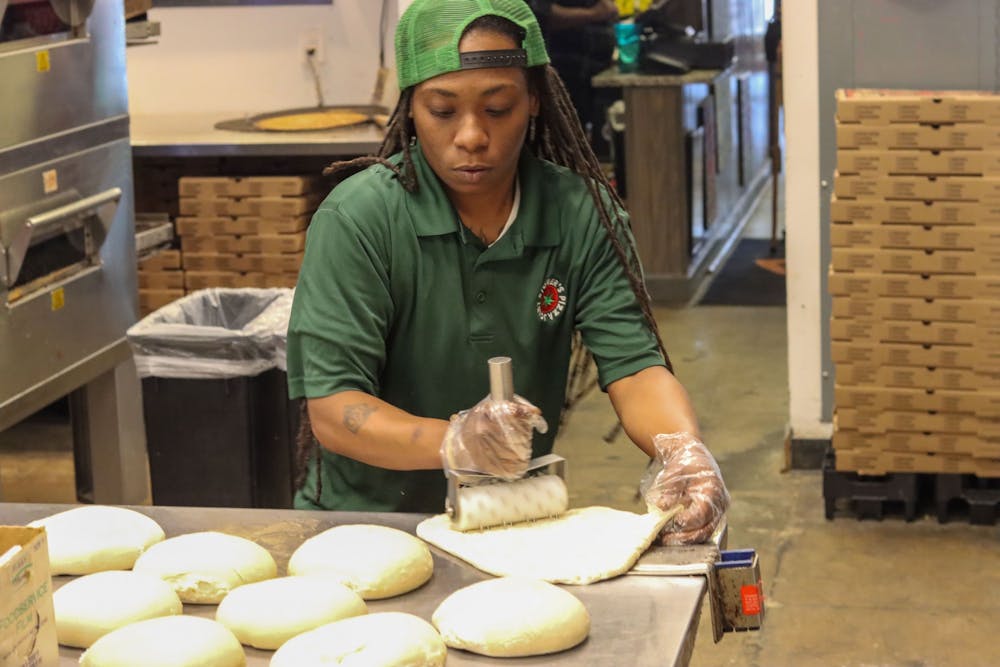Desean Gibson weighed 200 pounds when he got out of prison. In less than three months of being on the streets of Columbia, he had lost around 60 pounds.
Gibson now works at Drake’s Duck-In on Main Street and is no longer homeless. But he is deeply aware of this experience that many in Columbia share.
Many people in the Main Street area and those familiar with the issue of homelessness throughout the city agree there is a large, disadvantaged homeless population, but that the best way to help the homelessness is complicated. Their comments on what homelessness looks like in the area and what the city could be doing differently also vary.
Gibson said he sees people struggling with what comprise his memories every day and thinks the city could be doing more, like providing food and clothing donations.
“You got one pair of shoes, two pair of socks, wear the same socks every day, things get moist, your feet start aching, you’re trying to find a place to lay down when it’s raining and storming – it be real rough out there,” Gibson said.
In 2018, Richland County was one of only three areas in South Carolina with an estimated homeless population of more than 500 by county, along with Greenville County and Horry County, according to the South Carolina Interagency Council on Homelessness.
Like Gibson, Joseph Eaddy, an employee at Stoner’s Pizza on downtown’s Washington Street, said he sees around 100 to 150 people per week at the store asking for help. He even knows many of them by name.
The store tries to help by letting them come in or giving them daily pizza slices that would normally be discarded.
Eaddy said he thinks city officials and citizens seem to practice willful ignorance, exemplified by the city’s mitigation approaches, like shortening park benches using dividers and putting cement spikes in window gaps that are big enough for people to lay down in.
“This city has this idea that ‘out of sight, out of mind,’” Eaddy said. “If you don't see them, they don't exist.”
Shanya Sadler, a second-year political science student from Anderson, South Carolina, said it is easier to ignore homeless people, resulting in people treating the homeless as sub-human. Others agreed that the imposed discomfort from their presence makes them empathetic, but only enough for a passing thought, not enough for action.
Quinotrese Johnson is the manager at Stoner’s Pizza. She said she encourages helping the homeless population, both personally and at the store, and agreed that the city could be doing more.
A regular at the store and a friend of Johnson, Daniel Lee Clark, said it took him around one and a half years to get off the streets after his twin brother’s death. He has struggled with mental illness and addiction all his life.
He now visits and does jobs for the store, and he said that Johnson’s help was the best thing that has ever happened to him.
“If it wasn’t for her, I’d be in a graveyard,” Lee Clark said.
He is currently staying at a halfway house in Columbia — housing for those between rehabilitation or prison and a stable place to stay — and said it made the biggest difference in getting off the streets. He said that his disability check is not enough to cover his expenses.
The halfway house costs $500 a month.
Eaddy also said he thinks it is unbelievable for a “military-forward” city to have so many homeless veterans.
One block south of Finlay Park, a park known for its homeless population, is Memorial Park, which serves to honor veterans. It has a Vietnam memorial that is the “largest monument of its type outside of Washington, D.C.” and four monuments to veterans, according to ExperienceColumbiaSC.com.
Leah Snead, now a second-year at USC, lived nearby downtown Columbia as a kid. She said residents purposefully avoid Finlay Park because of the many homeless people. When she does trash pick-up there, she still sees this.
“When I was a kid, it was like, you don't go to Finlay Park when you come and visit Columbia,” Snead said. “Then I come back and we're doing cleanup, and one of them was in Finlay Park, and it's the same exact issue. I mean, it's been 10 years and still, like, Finlay Park has the same thing going on.”
Homelessness has become more challenging and complex since 2019, as COVID-19 affects the city, according to reporting done by The Free Times and the SC Interagency Council on Homelessness.
People in Columbia also agreed that substance abuse, mental illness, the recurring disadvantages of being homeless and insufficient public resources cause this issue. They suggest having more city funding, more shelters, rehabilitation or even more job opportunities. Almost all said it is a serious problem for the area, and they, like anyone, don’t have the answers.

